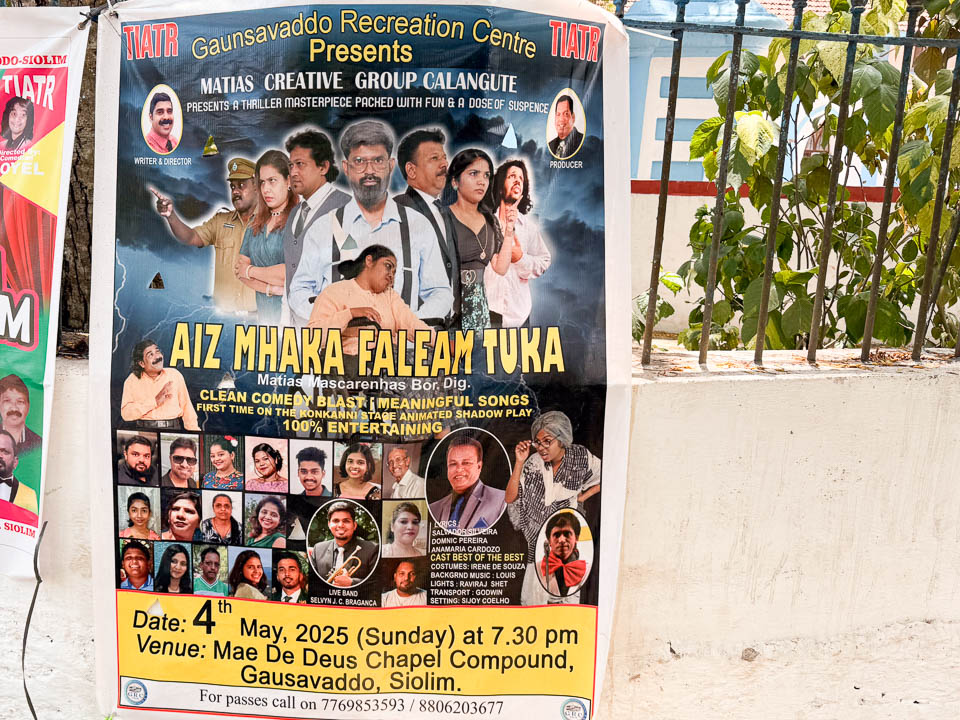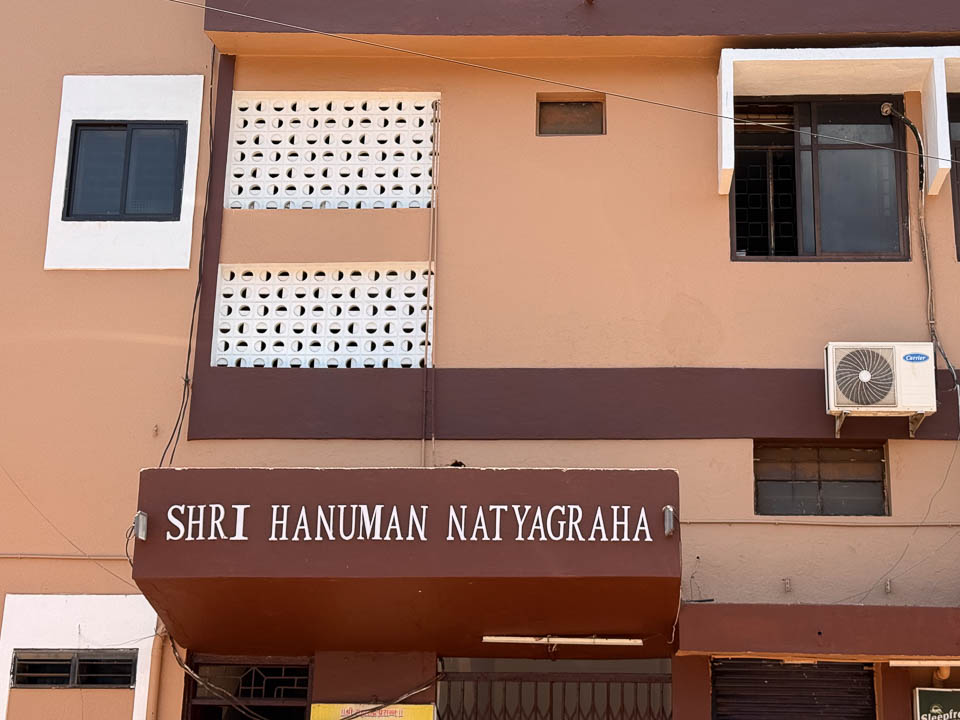Traditional theatre has long been the people’s medium. It thrives on immediacy, voice, crowd, and the thrill of shared space. But as entertainment migrates online — to Netflix, YouTube, Instagram, and home screens — older forms like tiatr in Goa, street plays in Maharashtra, and nautanki in North India are being pushed to adapt or risk irrelevance. These aren’t just performance genres. They are rooted in local language, politics, music, and satire. Their evolution tells us more than how art survives — it reveals how communities choose to stay seen.
This essay examines how these forms are navigating the pull of digital platforms and OTT culture, who is leading the shift, and what survival looks like in the algorithm age.
Tiatr in Goa: From Live Satire to YouTube Theatre
Goa’s tiatr is a hybrid of satire, song, and storytelling performed in Konkani. For decades it has been the voice of the working class — speaking directly to fishermen, bus conductors, and housemaids. But the COVID lockdown flipped the stage. Suddenly, packed auditoriums weren’t an option. Artists like Francis D’Tuem, Lawry Travasso and Saby de Divar moved online. Not out of strategy — out of necessity.
They started releasing Konkani songs on YouTube. Francis’s “Yes Boss CM” went semi-viral. Pete Roshan’s tribute to Sushant Singh Rajput gathered 60,000 views in days. These are not Bollywood numbers, but for tiatr, it was a clear sign — audiences were ready to listen online.

The shift didn’t come with money. As singer Socorro de Santa Cruz put it, “the aim is to stabilise online… earning will happen later.” Yet the move mattered. Artists were building an archive. A digital footprint that outlived the applause. The Tiatr Academy of Goa recognised this and launched its official YouTube channel in 2023. Performances, old recordings, and events are now streamed or saved online. It’s preservation with reach.
Goa’s first Konkani OTT platform, Super8OTT, arrived around the same time. It offers tiatr and films in one place — a niche bet, but one that signals seriousness. Meanwhile, diasporic communities in Bahrain, Canada and London are tuning in to stay culturally tethered.
But there’s a ceiling. Konkani remains a small linguistic market. YouTube royalties are low unless videos go viral. Piracy is rampant. And digital reach doesn’t always translate into ticket sales for live shows. Still, the effort has created a bridge — keeping tiatr visible in an ecosystem designed to ignore regional performance.
Street Plays in Maharashtra: Analog Roots, Selective Screen Moves
Nukkad natak was born on the street — urgent, raw, and political. It was never meant for the camera. It was meant for crowds. In Maharashtra, groups like AWAAZ in Mumbai or Janvikas Balniketan in rural districts still use it to raise awareness — on caste, sanitation, education, health.
Digital has not replaced this. It can’t. The immediacy of a street play — stopping passersby, holding a crowd, confronting apathy — can’t be reproduced on a screen. These plays still happen in chawls, on pavements, in schoolyards. But slowly, fragments are being uploaded. Clips, songs, posters. Facebook pages and WhatsApp videos. The idea is not to perform for the screen, but to document presence, attract funders, and build visibility.
During the pandemic, a few troupes flirted with audio plays and podcast-style storytelling. College groups ran digital competitions. Some made short awareness films using street theatre language. But no major OTT platform has shown interest in this form. The style is too direct, too local, too socially explicit.

Yet the power remains. A well-executed street play in a slum or rural panchayat can shift thinking. In Beed, street theatre against child marriage reportedly had more impact than workshops. During the pandemic, AWAAZ revived a street play on COVID awareness that reached hundreds in Mumbai’s informal settlements — no camera, just voice.
Their challenge is clear: no budget for digital expansion, little interest from sponsors, and a younger audience that’s swiping, not stopping to watch. But for now, the street still matters. They’re not trying to compete with OTT — they’re trying to stay relevant where it counts.
Nautanki in North India: Folk Drama at a Digital Crossroads
Nautanki is operatic, bawdy, musical theatre from Uttar Pradesh, Haryana and Punjab. Its roots are in rural melas, temple fairs, and night-long storytelling. Once mainstream, it faded with the arrival of cinema and later TV. Today, it’s making a quiet comeback — not on Netflix, but through folk media platforms, festival circuits, and YouTube clips.
Artists like Devendra Sharma have recorded entire nautanki performances and uploaded them. Some go semi-viral, especially among diaspora audiences hungry for dialect and rhythm. Nautanki songs — often devotional or romantic — are available on YouTube channels like Ganga Cassette or folk archives. Yet this digital presence is scattered. There’s no centralised platform. No systematic monetisation.
Institutions like the UP Sangeet Natak Akademi and the Kathak Kendra in Lucknow have hosted nautanki festivals and archived some material digitally. A few workshops during COVID saw students experimenting with nautanki forms on Instagram. But no one’s betting big. The form is seen as ‘folk’, not aspirational.
Its biggest challenge? Audience decay. Younger rural viewers are drifting to Instagram and Bollywood music. The language — Awadhi, Braj, Khari Boli — is rich but limiting in mass-market appeal. Technically, nautanki needs resources: costumes, instruments, makeup. Not easily repackaged into 3-minute reels.
Yet its storytelling power is intact. When nautanki adapts to modern themes — caste violence, gender issues, fake news — it connects. But someone has to fund and film it. Until then, it lives on in fragments — performed live, recorded occasionally, and shared in pieces.
Digital Isn’t Killing Folk Theatre — Apathy Is
It’s easy to blame Netflix or YouTube for the decline of local forms. But the problem isn’t digital competition. It’s lack of support. These art forms were never given infrastructure. No proper archives. No sustainable grants. No roadmap for online migration.
Yet, they adapt. Tiatr is building YouTube networks. Street theatre is using Facebook for outreach. Nautanki is turning up on folk streaming services. The efforts are grassroots, messy, often unpaid — but they’re there.
What’s missing is ecosystem thinking. Where are the regional arts-focused OTT platforms? Where are the digital fellowships for folk performers? Why aren’t cultural ministries commissioning online adaptations? If these forms are to survive, they need more than nostalgia. They need investment.
The Road Ahead: Hybrid or Bust
All three forms — tiatr, nukkad natak, nautanki — point to a clear trend. The future is hybrid. Keep the stage. Embrace the screen. Let the performance breathe live, but let the archive live online. Some will do it for reach, others for legacy. A few may even go viral.
But they shouldn’t try to become cinema or web series. Their strength lies in being local, direct, and responsive. Let them evolve on their own terms. Give them tools — cameras, editing help, training, translation. Give them respect.
If India wants to protect its cultural diversity, it must treat folk theatre not as an old curiosity, but as living practice. One that can — and should — find space alongside OTT giants. Not as competition, but as counterpoint. Something rooted. Something real. Something the algorithm can’t fake.
